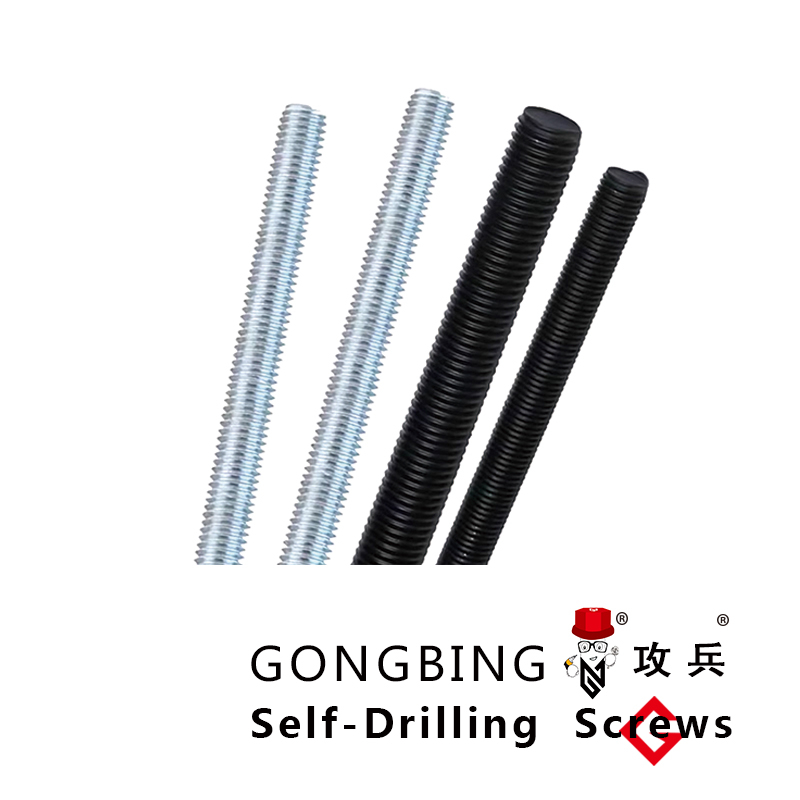Wedge Anchor Bolts for Secure Concrete Installation and Structural Support Solutions
Wedge Anchor Bolts for Concrete A Comprehensive Guide
Wedge anchor bolts, often referred to simply as wedge anchors, are a type of fastener commonly used to secure objects to concrete. They are essential in various construction and industrial applications, serving a critical role in ensuring the stability and longevity of structures. This article will delve into the functionality, installation, and advantages of wedge anchor bolts for concrete applications.
What are Wedge Anchor Bolts?
Wedge anchor bolts are designed specifically for use in concrete and are available in various sizes and materials. Typically, they consist of a bolt with a wedge-shaped end, which fits into a pre-drilled hole in the concrete. The wedge anchor is then expanded by tightening the nut on the bolt, causing the wedge to lock against the sides of the hole. This expansion creates a secure connection, anchoring the object it is intended to hold.
How to Install Wedge Anchor Bolts
The installation of wedge anchor bolts requires careful planning and execution to ensure maximum holding strength. Here is a step-by-step guide
1. Select the Right Size and Material Choose a wedge anchor that is appropriate for the load and environment. Stainless steel or coated anchors are preferred for harsher conditions to prevent corrosion.
2. Drill the Hole Using a hammer drill, create a hole in the concrete wall or slab. The hole should be drilled to the depth specified on the wedge anchor packaging, typically 1/2 inch deeper than the anchor length to account for dust and debris.
3. Clean the Hole After drilling, use a vacuum or compressed air to remove any dust and debris from the hole, ensuring a clean surface for better anchorage.
4. Insert the Wedge Anchor Place the wedge anchor into the hole, tapping it with a hammer if necessary to ensure it is fully seated.
5. Tighten the Nut Use a wrench to tighten the nut on the wedge anchor. As you tighten, the wedge expands against the concrete, creating a secure hold. Follow the manufacturer's recommended torque specifications to avoid over-tightening, which can damage the anchor or the concrete.
wedge anchor bolts for concrete

6. Inspect the Installation After installation, inspect the anchor to ensure it is securely fastened and properly aligned.
Advantages of Wedge Anchor Bolts
Wedge anchor bolts offer several advantages, making them a preferred choice for concrete fastening
1. High Load Capacity Wedge anchors are designed to carry significant loads, making them suitable for various applications from light household fixtures to heavy industrial machinery.
2. Versatility They can be used in both horizontal and vertical applications, providing flexibility in their use.
3. Ease of Installation Wedge anchors can be installed relatively quickly compared to other anchoring methods, which can save time on construction projects.
4. Minimal Risk of Concrete Failure When installed correctly, wedge anchors distribute load evenly across the concrete, reducing the risk of cracking or spalling.
5. Corrosion Resistance Available in different materials, including galvanized and stainless steel, wedge anchors can resist corrosion, making them suitable for outdoor and wet environments.
Conclusion
Wedge anchor bolts are a reliable choice for anchoring in concrete applications, providing high strength, versatility, and ease of installation. Understanding the proper installation techniques and selecting the appropriate type for your specific needs can significantly enhance the safety and stability of your projects. Whether you are a professional contractor or a DIY enthusiast, incorporating wedge anchor bolts into your construction practices will ensure that you achieve durable and secure connections in your concrete works.
-
Weatherproof Plastic Expansion Anchors for OutdoorNewsJun.06,2025
-
Sustainability in the Supply Chain: Eco-Friendly TEK Screws ProductionNewsJun.06,2025
-
Load-Bearing Capacity of External Insulation FixingsNewsJun.06,2025
-
Double Head Bolts: Enhancing Efficiency in Industrial MachineryNewsJun.06,2025
-
Corrosion Resistance in Chipboard Screws: Coatings for Wholesale DurabilityNewsJun.06,2025
-
Butterfly Toggle Bolts : Enhancing Structural ResilienceNewsJun.06,2025
